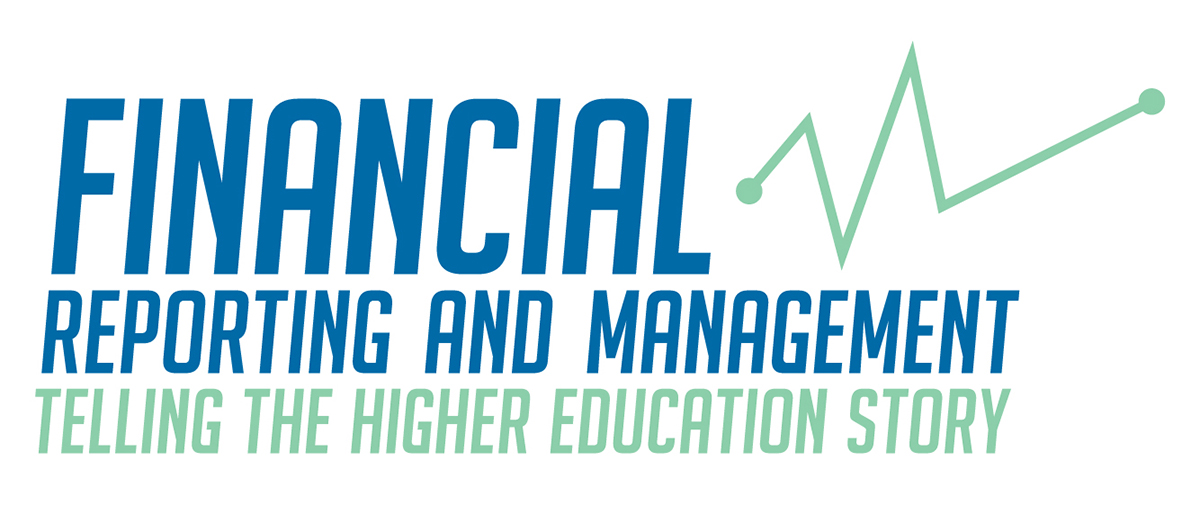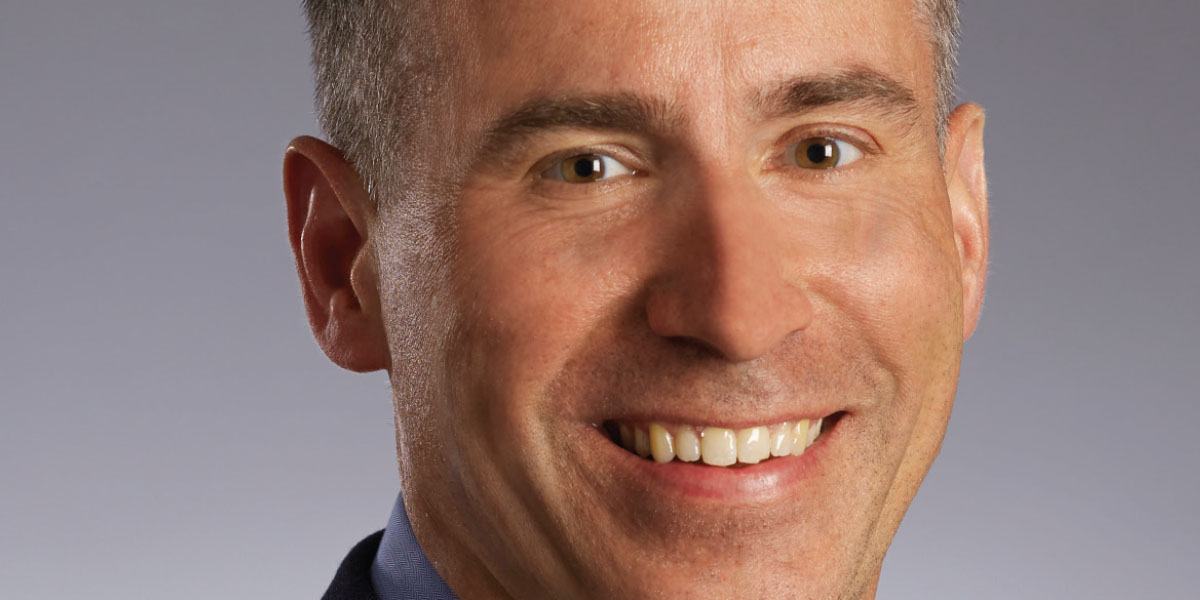
The Financial Accounting Standards Board (FASB), the Governmental Accounting Standards Board (GASB), and the International Accounting Standards Board (IASB) should strive to be as consistent as possible with respect to technical accounting issues, says Russell G. Golden, who became the seventh chairman of the FASB on July 1, 2013.
Coincidently, David A. Vaudt became the new chairman of the GASB on the very same day. An interview with Vaudt is planned for an upcoming issue of Business Officer.
Since 2004, when Golden became a FASB senior staff member, he has been immersed in issues of concern to the FASB. In 2008, he became technical director for the FASB staff. He was appointed to the board in 2010, becoming chairman in 2013.
Prior to joining the FASB, he was a partner at Deloitte & Touche LLP in its national office. He began his accounting career at Deloitte on the West Coast after earning his bachelor’s degree from Washington State University in Pullman, working with clients in aircraft manufacturing, construction, and health care insurance. Later he worked in Deloitte’s auditing group as well as in mergers and acquisitions.

The following interview for Business Officer took place earlier this spring.
You’ve said that one of your goals as chair of the FASB is to improve the way financial information is delivered to those who consume it. You’d like to improve presentation, to simplify. Can you provide an example?
I think there are two types of complexity. First, there’s the difficulty that preparers have in understanding what accounting model they’re expected to use. Second, there’s the kind of complexity when preparers understand the requirements but implementation is difficult. Examples of the second type, which those in higher education are familiar with, are requirements related to Level 3 fair value investment inputs and/or hedge accounting. The board is focusing on the first type of complexity and trying to align the different models, and also to reduce some of the uncertainty around what the preparer is expected to do.
Although most not-for-profit organizations [NFPs] don’t currently qualify for hedge accounting, it looks like that may be changing. Because many institutions engage in hedging transactions, this is one area where independent higher education institutions would like more consideration about what they can do and what the expectations are.
I think hedging activities are an important part of any risk-mitigating strategy by management, and we don’t want situations where companies are not entering into what they think are appropriate transactions because of the complexity around the accounting. Today’s hedge accounting is somewhat rigid.
The GASB came out with a standard on derivatives and hedge accounting, and some of its criteria for assessing effectiveness as well as reporting and disclosure differ from the FASB’s guidance. If you’re going to revisit hedge accounting, might this be an area where you would collaborate with the GASB?
Absolutely. When we take on new projects in the future, in areas where we think US GAAP needs to be improved, we’re going to look at what other standard setters—including the IASB and the GASB—have done. This will help us to determine whether they have a better way to evaluate the problem that we’re trying to solve. We can really start with either one or both of their standards to come to an approved solution for US GAAP.
One of the challenges we have in our industry is the fact that we live in two worlds—the private colleges and universities and the public institutions. NACUBO has done some extensive comparisons around the differences between the GASB and the FASB. To do internal benchmarking, we rely on financial statements, but we’re a bit hamstrung because of some of these differences. Do you see any opportunities where we could look for a little more comparability?
When Dave Vaudt, chair of the GASB, and I became chairs at the same time, we recognized our need to use the same terminology. We observed that what the FASB called pre-agenda work is something different than what the GASB called pre-agenda work. The terminology differences led our stakeholders to think that we were doing different activities, when we really weren’t. We talked about whether we could align some staff members to work for both groups at the junior levels, and allow them to share resources to be more efficient and effective. So far, we’ve been successful in implementing some behind-the-scenes efforts to build a bond between the FASB and the GASB.
With respect to the technical accounting, I have the view that we should strive to be as consistent as possible, between the FASB and the GASB, or the FASB and IASB. But, we need to recognize that sometimes there are legal differences, sometimes regulatory differences, and in some cases, cultural differences. I think the goal of making things better and closer is one we should all try to achieve. I don’t think we should have differences just because standards were created by different groups at different times. If it’s the same transaction, we should all strive to be as close as possible.
We find that many types of users—even from the White House and through the halls of Congress—see us as one industry, even though we’re fairly evenly split between public and private colleges and universities. We’ve struggled to find a way to have some comparability. We’re wondering if there could be a comparable operating statement that both boards might sanction to unite higher education.
I’ve just started to focus on this area, but I’ve asked the team to pull together a description of the broad differences between a private higher education institution and a public or state-controlled institution. What would be the implications at the consolidated level for the state if there were substantial changes to the activity statement or other measurement recommendations? I’ve also asked them to help me understand the same issue outside of higher education—for example, for hospitals or other organizations.
NACUBO’s Accounting Principles Council is working on a pro forma activity statement that can work for both public and independent institutions. We’re even getting a few schools to test it. Do you think the staff would be willing to look at our pro forma and have a conversation?
I suspect they would be. One of the process improvements that we started here at the FASB after I became chairman was expanding how we do pre-agenda research, so that we can get a broader understanding of problems on the front end. Then, when we go into a project, we would have broad agreement among the board members of the problem we’re trying to solve, as well as some cost-effective solutions that we could put forward. This is what you believe would be a cost-effective solution, so this is one of many things we could probably do.
Higher education has been participating in FASB’s Not-for-Profit Advisory Committee [NAC]. As you’ve participated in it also, is there anything that surprised you about the process?
What I have learned from the NAC process is similar to what I learned from the FASB’s Private Company Council process, and that is that investors are different among public companies, private companies, and not-for-profit organizations. As the board makes decisions, whether they’re related to measurement, recognition or disclosures, we need to recognize that one size does not always fit all. What we learned from the Private Company Council was that we should focus on relevance, first and foremost.
We’re also recognizing that the cost burden can be significant, because of the resources of a not-for-profit are more limited than those of a private company.
Now that the bright-line distinction between public and nonpublic has been eliminated, we understand that you’re nuancing it a bit more, based on the entity and perhaps the criteria in accounting and reporting requirements. Is that correct?
Yes. For example, we may propose changes that we feel need to be made so that investors can better value a company—say, related to remeasurement of the company’s debt. That need to have constant updated valuation is probably more useful for a public company investor than it would be for a nonprofit, because you don’t value nonprofit entities.
That’s why pre-agenda research is very important. What is the problem that’s been observed? How can we solve that problem? Better understanding the problem may help us determine whether it is an issue that needs to be solved for all stakeholders, or just certain stakeholders. The entities that we serve are different and unique—we should ensure that what we’re doing is always relevant for them.
A number of projects were recently dropped from FASB’s agenda, including “Not-for-Profit Financial Reporting: Other Financial Communications.” Could the FASB staff provide some guidance on an item important to a constituent group, such as management’s discussion and analysis [MD&A]? It wouldn’t have the board vote behind it, but it would be helpful.
It’s clear to me that MD&A would provide useful information to users of not-for-profit financial statements, but we were concerned about moving forward because we felt it was unlikely that we would be in a position to mandate it. We recognize that we have no ability to prevent anyone from choosing to do the MD&A. It seems that our most effective use of resources would be to facilitate a broader education of the objective and purpose of MD&A, the reasons why it would be in management’s best interest to voluntarily put it out, and what the MD&A could look like. That education could come from the FASB staff or from a joint effort of the FASB staff, NACUBO, and the AICPA.
In higher education, we have significant reporting—for IPEDS and various federal agencies—and we could really use a common database of relevant information that includes financial statement disclosure information and so on. Is there a possibility that we could tap into some of the expertise that the FASB has generated in this area—for example, the XBRL technology language?
I’m a big fan of XBRL [electronic communication of financial data] for the public companies. It’s a very powerful tool, it gets you information very quickly, and it promotes comparability. I recently asked the individual who leads our experimental initiative if he thought it could be utilized for the not-for-profit community, and he thought that that would be a very important step forward, and something that we should begin to think about proactively. We’d have to understand the time commitment, the cost, and whether it would be used.
What is your perspective on liquidity and why it’s important?
I think when people talk about liquidity, what they’re concerned about is whether an organization is going to be able to pay their obligations when they become due, so they need to understand what they generally earn in a period, versus what they owe. A lot of that information is in the financial statements. It’s the risks associated with what might happen in the future that cause liquidity problems.
We do have disclosures around risks and uncertainties, but they’re often boilerplate—and that’s not unique to the nonprofit community. There’s a constant tension about how you put into financial statements the risks and the future risks so investors can understand the potential liquidity risk, and how those forecasted transactions can actually be audited. That primarily is why a lot of liquidity information is outside of the audited financial statements for for-profit public companies, in MD&A or other places.
We had a project on our agenda that we called liquidity and interest rate risk disclosures, primarily focused on financial institutions, to be able to understand the correlation between assets and obligations. It was not well received; preparers were concerned about their ability to provide the information.
Giving information to investors about risk is extremely important, even if those risks are backward-looking. We need to give investors, users, and donors enough information so that they can ask about the current risk, how management is managing the risk, and what is keeping management up at night. I think it’s important to do enough red-flag disclosure so that people get an idea of the questions they should ask.
Private companies have their own review board. Do you think there’s any possibility that not-for-profits might have something like that, especially through the work of the Not-for-Profit Advisory Committee?
What we have learned from the creation of the Private Company Council is that the board should have done a better job of understanding the relevance of financial reporting for different types of stakeholders—private companies, nonprofits, and employee benefit plans—and recognizing that not all transactions that are relevant for public companies are necessarily relevant for the other ones. We built the infrastructure for the decision-making framework, and we’re learning and processing how that should apply to nonprofits.
The Private Company Council has two important objectives: first, to do a look back on how we can reduce complexity and increase relevance for private company stakeholders. At the same time, for future projects, to advise the board on how to make improvements for private companies. That aspect is what the Not-for-Profit Advisory Council is doing for us, on looking forward for future projects. So, there is overlap there.
It’s important to me that, when we do initiatives, the initiatives be for all of our stakeholders, not just one subset.
So some of what will be learned from the Private Company Council may make its way into the not-for-profit advisory world.
Absolutely. We have learned that we need a focus on relevance, and that users are different between not-for-profit and private companies, and not-for-profit and public companies. We learned that resources are tight and the learning curve is different for public companies versus nonprofits and private companies that have different effective dates. And, I suspect we’ll learn even more.
What do you see as the next frontier?
In the past, we started with paper and it was all there; now it’s in the computer, but it’s still all there. We’ve been thinking of this information as all one “chunk,” but with XBRL technology, maybe that chunk philosophy is not the way people will be consuming information. What does that mean for the standard setter, for the preparer, for the investor? What philosophy should guide us as we think about how we’re evolving?
In addition, I’d like to see us think about and learn from information that is provided to investors outside of financial statements, to determine whether there’s more that we should put in them, or if some of the things we’re requiring in the financial statements are just no longer relevant.
I think that presentation is going to be very important. I think that we need to do some forward thinking as a profession about how information is delivered to those who consume it.
STEPHEN D. GOLDING is the vice president for finance and treasurer, University of Pennsylvania, Philadelphia.
SUE MENDITTO is the director of accounting policy, NACUBO.



